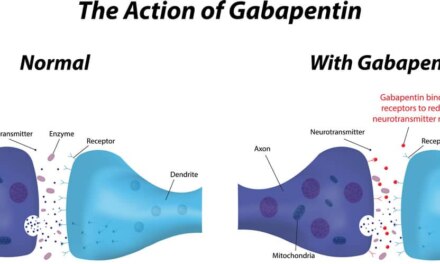Nicotine pouches. They were new to me, although I understand now that they’ve been around for a decade or more, growing in popularity. One reason I hadn’t heard of it: I’m not part of the target market at which pouch sales are aimed.
That would be young people, including the underaged. Not just here in the US, but in Europe and parts of Asia. Never mind that nicotine itself contains risks, especially for young users. That’s rarely discussed.
You slip the pouch between your cheek and gum. It’s a small bag made of material that allows the contents to seep easily into your mouth. Made me think of a tobacco chaw, except the pouch doesn’t contain tobacco. Only nicotine in powdered form.
Allegedly this is why the product is ‘safer’ than tobacco – no tars or other toxins, just nicotine. Which as we mentioned is highly addictive.
It says so, right there on the label.
WARNING: This product contains nicotine. Nicotine is an addictive chemical.
That doesn’t seem to be much of a deterrent to potential customers. I’m sure the widespread acceptance comes as a great relief to the many firms, including members of Big Tobacco, that have invested heavily in the success of this ‘new’ product.
Their hope: to replace the revenue that was lost once the public understood that cigarette smoking was potentially fatal, and began to look around for alternatives. Those that were able to give up the cancer sticks, I mean. A significant percentage try but fail.
If this is sounding a lot like the origins of Juul, that’s no coincidence.
Here’s something from the United Kingdom:
Influencers and freebies: Big Tobacco’s push to sell nicotine pouches in UK
The nicotine powder in today’s pouch is flavored with a variety of sweeteners. Think cola, coffee, and mint (the most popular). Advertisements claim sucking on a nicotine pouch won’t stain the teeth or sour one’s breath the way chewing tobacco might.
The pouches are also promoted as less toxic than combustible tobacco and as an aid to quitting for chronic cigarette addicts. Claims for their effectiveness are hard to verify. One expert observed that marketing products as an aid to healthy living is an effective way to increase their respectability in the eyes of the general public – much the way medical marijuana programs made recreational pot palatable to legislators.
As one anti-smoking charity observed, this kind of marketing comes straight out of Big Tobacco’s playbook.
Other marketing strategies mentioned in the article include modeling flavors on popular youth-friendly candies, such as Skittles and Mentos. Also offering heavy online discounts to new purchasers.
Not surprisingly, the online sales have evolved to include super-potent pouches. They’re well above other forms in terms of sheer nicotine content. And the flavoring includes teeny-bopper favorites like bubblegum and strawberry milkshake.
It’s a pattern that continues to repeat itself: Someone develops a new product that just so happens to be addictive. It’s picked up by industry for one reason and one only: The potential for profits. After a while, when it’s gained a foothold in terms of demand, public concern leads the government to step in, with the idea of limiting sales. Concerned about revenue, makers search out other legal but addictive products to promote, alongside or in place of the ones now out of favor.
It’s a cycle that apparently goes on and on and on….
Why? Because the addicted user is always your most loyal customer.













